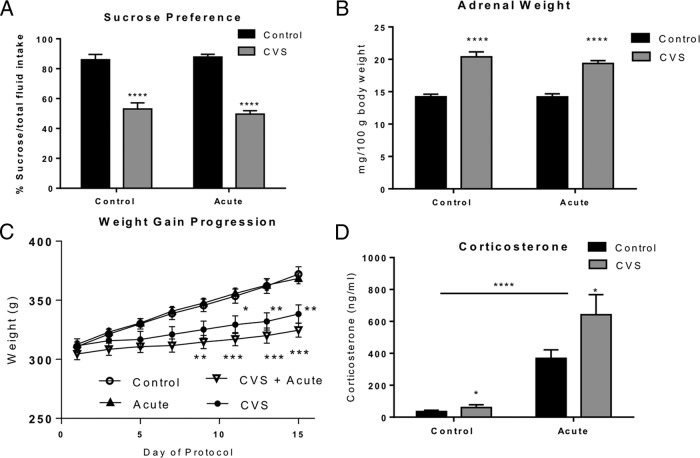Figure 2.
Physiological measures of chronic stress and acute stress. Quantification of sucrose preference test and physical parameters from animals subjected to either control conditions, 30 minutes of acute stress alone, 14 days of chronic variable stress (CVS) or 14 days of CVS plus 30 minutes of acute stress. A, Results from sucrose preference test administered as described in the Materials and Methods. CVS treatment caused a significant reduction in sucrose preference compared with control and acute stress rats (****, P < .0001, n = 6 per group). Acute stress had no significant effect on sucrose preference. B, Adrenal gland weight. CVS treatment caused a significant increase in adrenal weight relative to body weight compared with control animals (****, P < .0001; measured as mg/100g body weight; n = 12 per group). C, Change in body weight across stress paradigm. Both CVS (n = 12) and CVS plus novel acute stress (n = 12) rats showed a significant decrease in weight gain compared with control rats (n = 12). No significant difference in body weight gain was seen between CVS and CVS plus novel acute stress animals. D, CVS treatment resulted in a significant increase in serum levels of corticosterone from trunk blood compared with control animals (*, P < .05; n = 12). Furthermore, acute stress significantly increased serum levels of corticosterone compared with both control animals and CVS animals (****, P < .0001). Data are shown as means ± SE.

